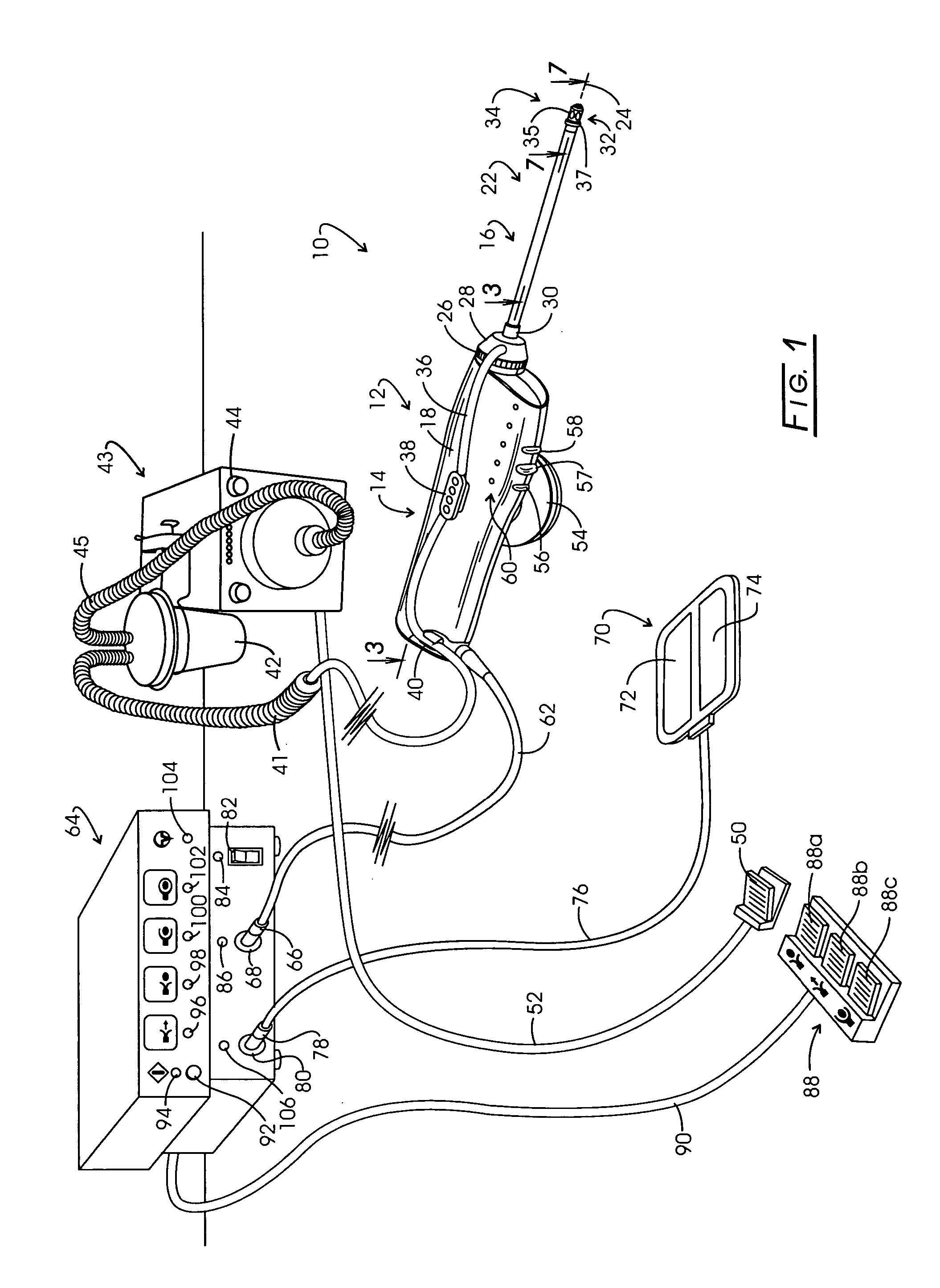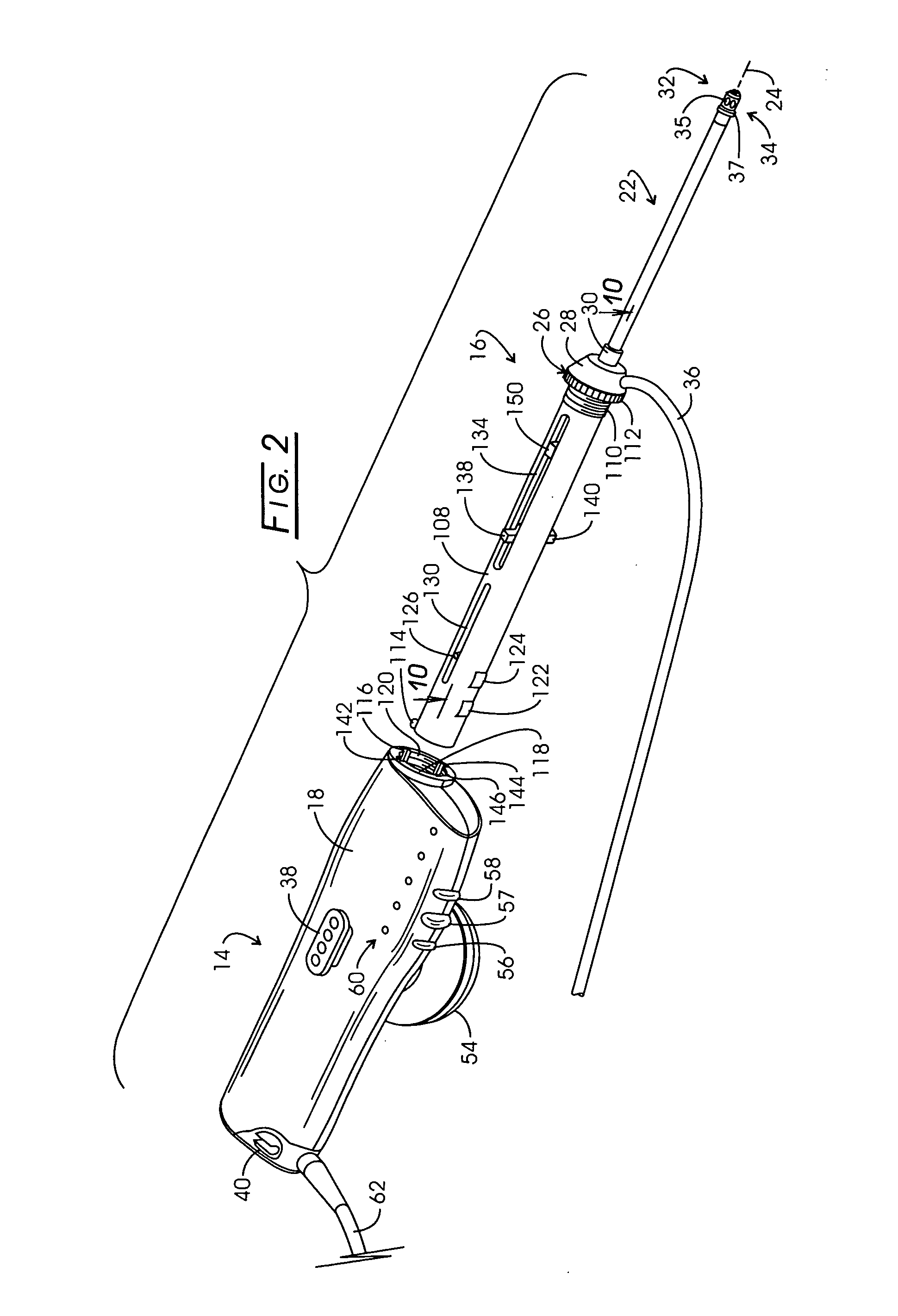Electrosurgery with infiltration anesthesia
a technology of infiltration anesthesia and electrosurgical generator, which is applied in the field of electrosurgical generator shutdown, high conductivity of conventional diluent,
- Summary
- Abstract
- Description
- Claims
- Application Information
AI Technical Summary
Benefits of technology
Problems solved by technology
Method used
Image
Examples
Embodiment Construction
[0060] The present method for carrying out surgical procedures utilizing an arc-creating electrosurgical electrode assembly. Such method looks in one aspect to the isolating and retrieving of a tissue sample volume, for the most part, evolved in the course of carrying out animal studies and trials with the above-identified surgical system of Neothermia Corporation. Accordingly, in the discourse to follow, the salient aspects of that system are described to afford an enhanced understanding of test data revealed herein. Certain of that test data is set forth in Appendices A and B annexed hereto, while other such data is assembled in tabular as well as graphic form.
[0061] Referring to FIG. 1, the noted system for isolating and retrieving a target tissue volume is illustrated in general at 10. System 10 comprises a tissue retrieval instrument represented generally at 12 which includes a reusuable component represented generally at 14. Component 14 sometimes is referred to herein as the...
PUM
 Login to View More
Login to View More Abstract
Description
Claims
Application Information
 Login to View More
Login to View More - R&D
- Intellectual Property
- Life Sciences
- Materials
- Tech Scout
- Unparalleled Data Quality
- Higher Quality Content
- 60% Fewer Hallucinations
Browse by: Latest US Patents, China's latest patents, Technical Efficacy Thesaurus, Application Domain, Technology Topic, Popular Technical Reports.
© 2025 PatSnap. All rights reserved.Legal|Privacy policy|Modern Slavery Act Transparency Statement|Sitemap|About US| Contact US: help@patsnap.com



